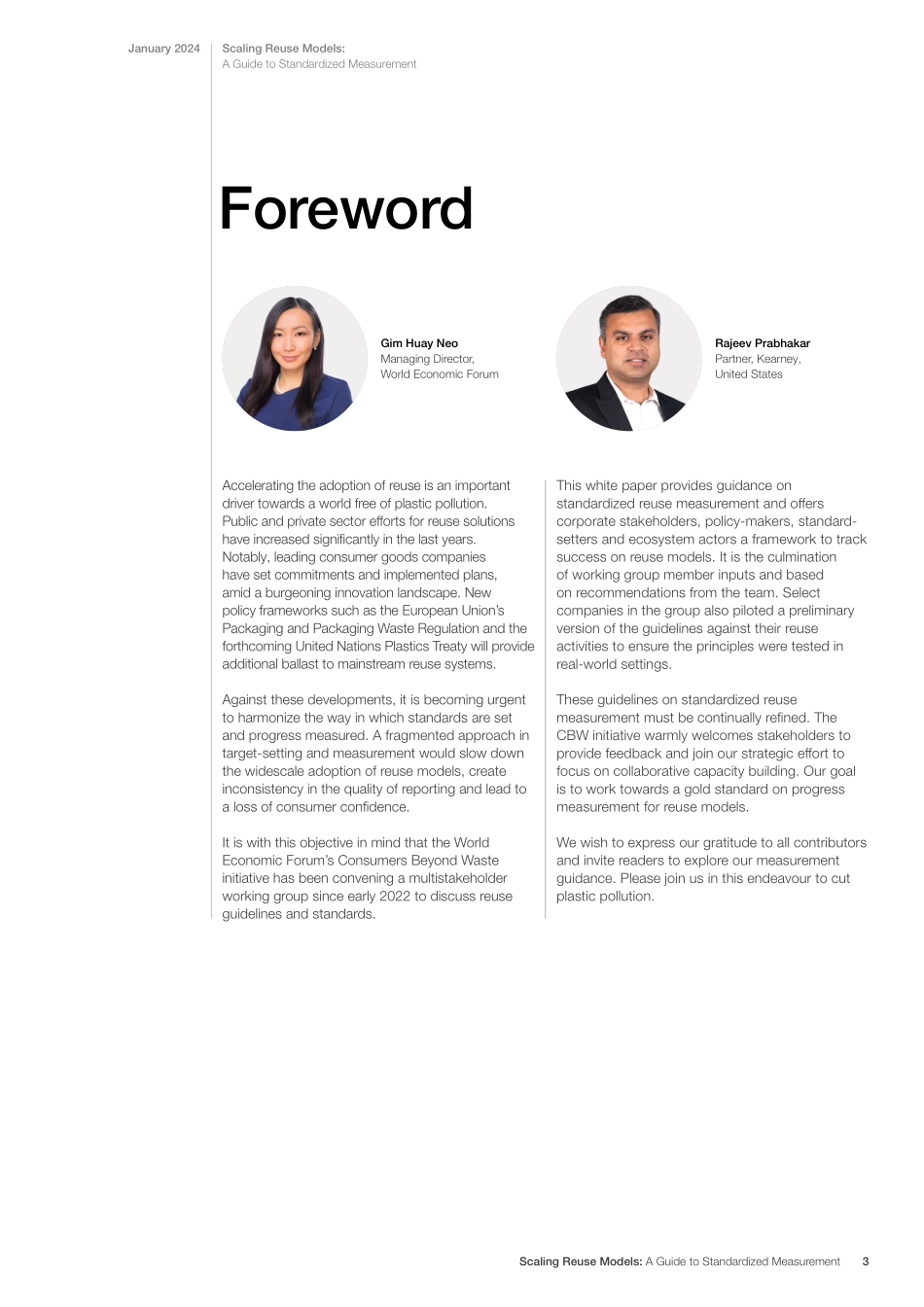Scaling Reuse Models:A Guide to Standardized MeasurementW H I T E P A P E RJ A N U A R Y 2 0 2 4In collaboration with KearneyImages: Getty Images© 2024 World Economic Forum. All rights reserved. No part of this publication may be reproduced or transmitted in any form or by any means, including photocopying and recording, or by any information storage and retrieval system.Disclaimer This document is published by the World Economic Forum as a contribution to a project, insight area or interaction. The views and opinions expressed herein do not necessarily reflect the views or opinions of any member of the Consumers Beyond Waste initiative or of any individual or entity mentioned in or consulted for this report. Notably, the measurement guidelines will be continually refined, as working group members are still seeking convergence on several areas noted in the document.ContentsForeword 3Executive summary 4Introduction 51 Reuse measurement parameters and definitions 61.1 Reuse measurement scope and parameters: 6 Inclusions and exclusions1.2 Reuse definitions and terminology 112 Reuse measurement parameters and definitions 172.1 Reuse measurement guidelines journey 172.2 Outcomes from piloting the guidelines 193 Calculation models and measurement approaches 213.1 Metric 1 calculation approach 213.2 Metric 2 calculation approach 22Conclusion 25Contributors 26Endnotes 27Scaling Reuse Models: A Guide to Standardized Measurement2ForewordAccelerating the adoption of reuse is an important driver towards a world free of plastic pollution. Public and private sector efforts for reuse solutions have increased significantly in the last years. Notably, leading consumer goods companies have set commitments and implemented plans, amid a burgeoning innovation landscape. New policy frameworks such as the European Union’s Packaging and Packaging Waste Regulation and the forthcoming United Nations Plastics Treaty will provide additional ballast to mainstream reuse systems.Against these developments, it is becoming urgent to harmonize the way in which standards are set and progress measured. A fragmented approach in target-setting and measurement would slow down the widescale adoption of reuse models, create inconsistency in the quality of reporting and lead to a loss of consumer confidence.It is with this objective in mind that the World Economic Forum’s Consumers Beyond Waste initiative has been convening a multistakeholder working group since early 2022 to discuss reuse guidelines and standards.This white paper provides guidance on standardized reuse measurement and offers corporate stakeholders, policy-makers, standard-setters and ecosystem actors a framework to track success on reuse models. It is the culmination of working group member inputs and based on recommendations from the team. Select companies in the group also piloted a preliminary version of the guidelines agains...


